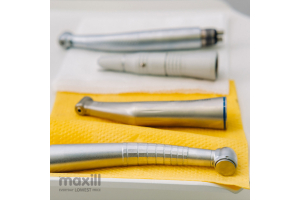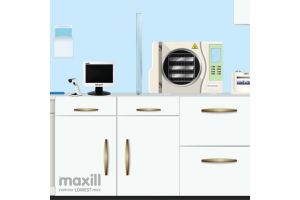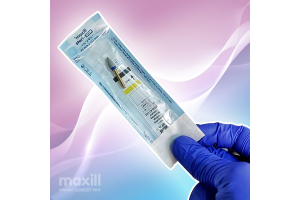Tracking and Tracing Instruments to Patients: A Strategic Approach to Risk Management
Risk management is at the forefront of the topic of infection prevention and control (IPAC). When looking at IPAC through a risk management lens we can breakdown where the risks originate and tackle them with the proper mitigation. Tackle them AHEAD of time before they are a problem. Think of risk mitigation as the addition of safety nets to catch the problem and halt its negative consequences.
Risk management deduction is best executed by posing the ‘right’ questions. Simple questions that allow the narrowing of the problem at hand. There is no magic number of questions, but rather realizing it can take as many questions as needed. On the topic of instrument reprocessing what questions could be asked to see the risks, evaluate if your safety nets have holes and decide where to add or repair safety nets? Let’s break it down.
Question 1: What needs to be tackled in instrument reprocessing BEFORE it’s a problem? Or posed with another question … what risk is present in the reprocessing of instruments?
Answer: The risk of the possibility of the sterilization process having a lapse and rendering the instruments non-sterile.
Question 2: What safety nets are in place to ‘catch’ a sterilization issue before it’s a problem?
Answer: Quality assurance sterilization monitoring is one of the safety nets. The elements of mechanical, chemical and biological testing are used to challenge the sterilization process to validate the parameters of sterilization. Not using a Type V CI in a PCD and placing a Type V CI in every package? Well, you have a hole in your safety net. Repair your safety net!
Question 3: What other safety net is present to ‘catch’ a sterilization issue before it’s a problem?
Answer: Packaging and labelling. Placing instruments in a sealed package that is opened only at point of use. Ensuring every package has a label with date, contents, sterilizer #, load # and initials of the person packaging.
Question 4: Why do we label packages? What safety net does writing a package label serve?
Answer: To link the instrument/device to the patient to know what instruments were used on what patient. This offers a high level of safety to each client. This offers a high level of security to the dental team in having safeguarded the office. In an audit or complaint this will prove you have sterilized THOSE specific instruments and will keep you operating.
Question 5: What other safety net is present to ‘catch’ a sterilization issue before it’s a problem?
Answer: Logging forms to record sterilization data and performance of QA tasks. This creates a repetitive process allowing an ‘error’ to be caught PRIOR to the instruments being released for the delivery of client care.
Question 6: What safety net must be in place prior to the logging of data on the log forms? Or … Where is the data coming from to enter on the log sheets?
Answer: The data is obtained from the data logger (paper/usb/SDcard) and is read, evaluated and logged PRIOR to releasing the load. The data is not stored for a full day then ‘read’. Worse yet the data is not stored for a month then ‘read’. The longer the wait the higher the risk.
Question 7: What other safety net is present to ‘catch’ a sterilization issue before it’s a problem?
Answer: Having done the daunting homework of collecting all the MIFU’s for the instruments/devices reprocessed to be certain of what time and temperature EVERY instrument/device must be sterilized.
Question 8: Are there any other safety nets?
Answer: Yes, written policies and procedures, including training, on proper steps of reprocessing and what to do in the event of a sterilization failure. For the information to be retained, simulation training is a smart approach.
Question 9: Are the safety nets strong enough in the event of a public complaint to deliver the proof of having used sterile instruments?
Answer: Yes, all the safety nets offer the necessary tracking and tracing to prove compliance and sterilization. All safety nets are in place to demonstrate to a client THEIR instruments used on THEM were sterilized.
Question 10: Are the safety nets strong enough in the event of a sterilization failure to deliver a tracking and tracing system for a swift and accurate instrument recall?
Answer: Yes, 100%! All the safety nets have been checked for holes and they compose a highly functional system that can be trusted in the event of an IPAC lapse.
This risk management deduction above concludes the dental office has a complete tracking and tracing system in place to be ready in the event of an external IPAC complaint from the public and in the event of an internal IPAC lapse. What happens if safety nets are removed? The risks are not properly mitigated, and the reprocessing system operates at a high level of risk for both the public safety and reputation/safeguarding of the dental office and its professionals.
For example, if the safety net associated with Question 4 and 6 are removed what would happen? The labelling of packages was not a routine practice in past years, but it is now best practice. Why are we labelling? To track and trace. If the data from the label is not linked to the client, how does the office prove to the public their instruments were sterilized or launch a recall that will not miss non-sterile packages, notify the wrong clients, or miss notifying clients?
What is NOT listed in the risk assessment questions? The day sheet! Why? The day sheet is a poor safety net. In fact, so poor that it is not a safety net at all. A recall of instruments due to a sterilization failure can not be tracked and traced using the day sheet and the log sheet. The reason is simple, the instruments used on the 2:00 pm client were not sterilized at 2:00 pm, possibly not that morning or the day before. Some instrument packages are sterilized weeks, months prior to their use. The day sheet and log sheet union are not a reliable mitigation of risk and were never intended to be matched to work together as a safety net.
Want to mitigate all these risks at an even higher level?
The task of tracking and tracing can be made seamless and worry free with advanced integration and the use of barcode scanning technology. Don’t want to write all the data from the packages in the client file? Don’t want to search through endless drawers and cupboards for packages from Sterilizer #1, load 4321 on Feb 14, 2024? Get a barcode scanner system. This is one area of dental office management where the technology is at our fingertips to ensure public safety and keep your dental office doors open. The barcode scanner becomes your strongest safety net!
Is it a MUST to track and trace instruments sterilized and document the label data in the client chart? The answer is YES! Where is this stated? The newly released 2023 Canadian Standards Association (CSA) Reprocessing Standards 5.8.3.1.3. Risk Assessment states criteria for “a system of traceability (i.e. a system for documentation of label information into a patient treatment record)”. Does only the RDH need to track and trace and not the DDS? Every dental and non-dental professional using a sterilizer and providing public care / services that have a risk of transmissibility of pathogens, must track and trace.
In conclusion, if a dental team had doubts of why and how they needed to track and trace, they shouldn’t now! In the moment of an IPAC lapse, and although we think it may never unfold it does on a regular basis, the office must be able to locate (TRACK) all instruments associated with the failed sterilization cycle and load. Furthermore, the office needs to have a system to know who the instruments were used on (TRACE). There is a significant level of risk associated if a dental office’s reprocessing system cannot track and trace. The CSA states the highest risk occurs with “the absence of a tracking system to link devices to patients.”. The objective of a quality IPAC program is to mitigate risks for optimal client safety PRIOR to their occurrence and have a policy and procedure ready in the event it happens. The other objective is for YOU, to safeguard YOU the dental professional by maintaining a credible reputation by avoiding the need to conduct a client notification process. In what province does this apply? All provinces in CANADA, as every dental regulatory body frames their standards of practice from the evidenced base information provided by the CSA.
Canadian Standards Association (CSA). (2023). CAN/CSA-Z314:23, Canadian Medical Device Reprocessing in All Healthcare Settings. National Standard of Canada by CSA Group. Access via purchase: https://www.csagroup.org/store/product/CSA%20Z314%3A23/?gad_source=1&gclid=CjwKCAiAqY6tBhAtEiwAHeRopTg3YwxdAo0LCsCKf-3iMwQMppeCJlGeaM0y-bNZ3tsJlx92_yLU8BoCGsEQAvD_BwE







